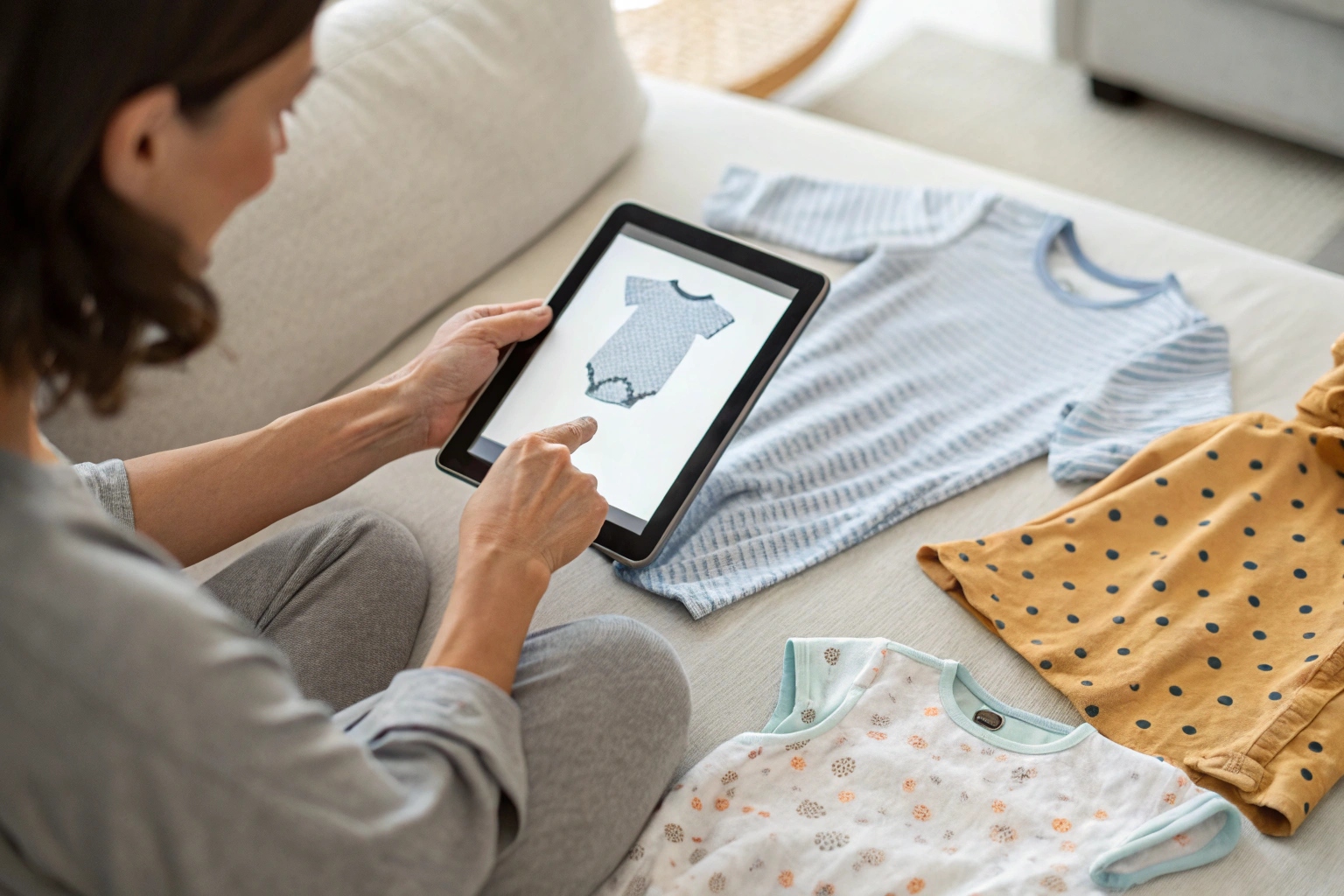Mass-produced baby clothes will always have a place—but in a world where every parent wants something special, personalization is changing the game.
Personalized babywear is rising because it blends fashion, function, and emotional connection—making each outfit meaningful and unique.
Here’s how babywear brands can tap into this powerful shift—and why it’s more than just a passing trend.
What Makes Customized Baby Clothing So Popular Today?
From monogrammed onesies to milestone outfits with names, personalized babywear is everywhere. And parents can’t seem to get enough.
Customized babywear is popular because it turns basic clothes into keepsakes, supports identity, and makes gifting more thoughtful.
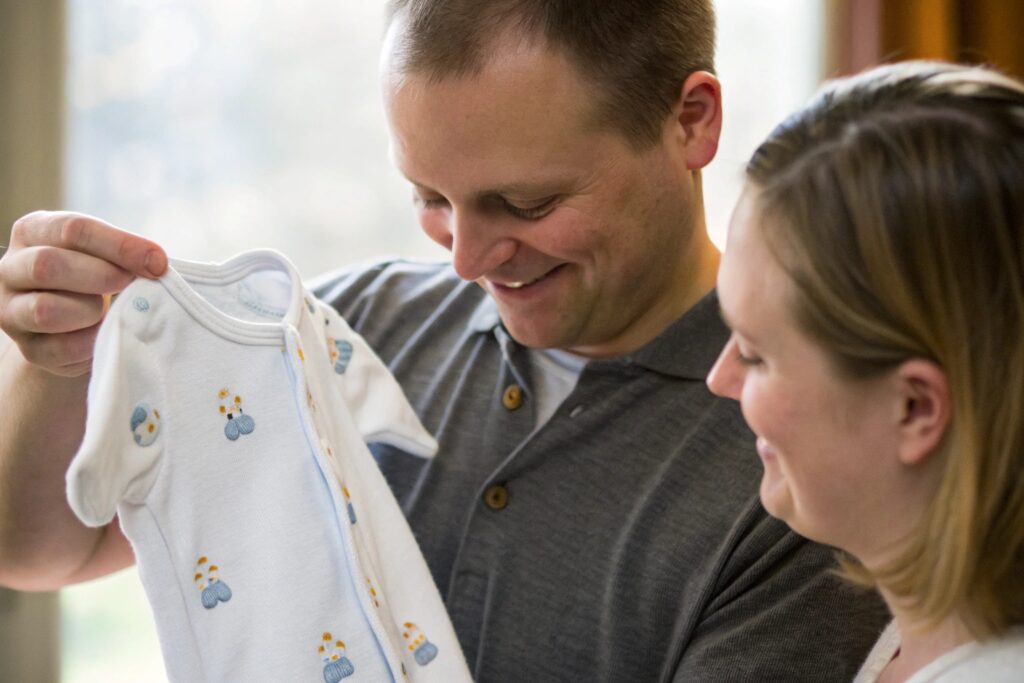
Why are parents choosing custom over regular?
Because it feels personal. Even a simple onesie feels special when it includes a baby’s name, birth date, or nickname. It reflects care—especially in gift-giving.
Customization offers:
- Identity: Names, initials, zodiac signs
- Milestones: “My First Birthday,” “Hello World”
- Celebrations: Holiday-themed, family matching
- Sentiment: Keepsake outfits to save forever
These items are share-worthy on social media and feel more “designed for my child,” not just another item off the shelf.
What makes custom babywear easy to sell?
Parents already shop online. Adding personalization is often just:
✔ Choose your size
✔ Pick your color
✔ Add your name or date
If your brand supports easy customization at checkout, you can instantly increase both order value and emotional engagement.
How Personalization Adds Emotional Value for Parents?
It’s not just clothing—it’s memory. Personalized babywear becomes part of family photos, first holidays, and treasured milestones.
Personalization adds emotional value by making babywear about memories, identity, and love—not just fabric and thread.
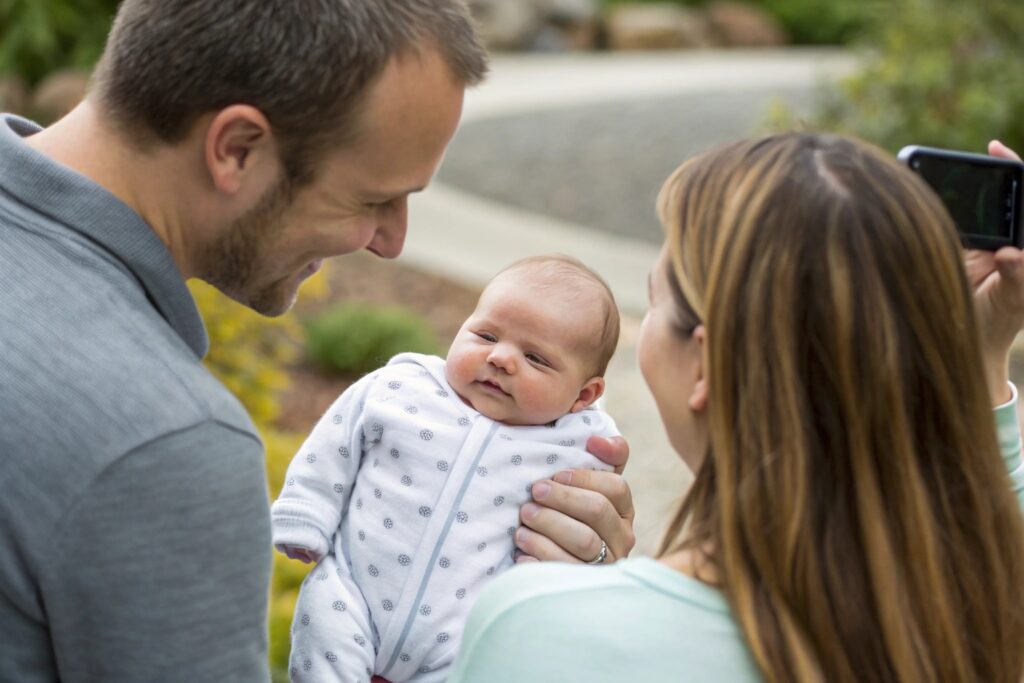
How do customized clothes build stronger emotional connection?
They mark moments:
- “Coming Home” outfits with initials
- “First Christmas” bodysuits with baby’s name
- Name-embroidered rompers gifted by grandparents
Parents keep these pieces long after they’re outgrown. Some frame them. Others pass them down. In a fast-fashion world, these items feel lasting.
Here’s what parents have said in reviews:
| Review Line | What It Shows |
|---|---|
| “We cried when we saw her name on the onesie” | Emotional attachment |
| “Saved it in her memory box” | Keepsake value |
| “Everyone at the baby shower loved it” | Social and gifting value |
Why does this matter for brands?
Because emotional value drives word-of-mouth, social sharing, and loyalty. If a parent remembers how your product made them feel, they come back—and tell others.
Top Trends in Embroidered and Name-Printed Babywear?
Customization used to mean a basic font on a plain shirt. Today’s personalized babywear is creative, playful, and trend-driven.
Current personalization trends include embroidery, mix-and-match fonts, icons, pastel palettes, family sets, and astrology-inspired designs.
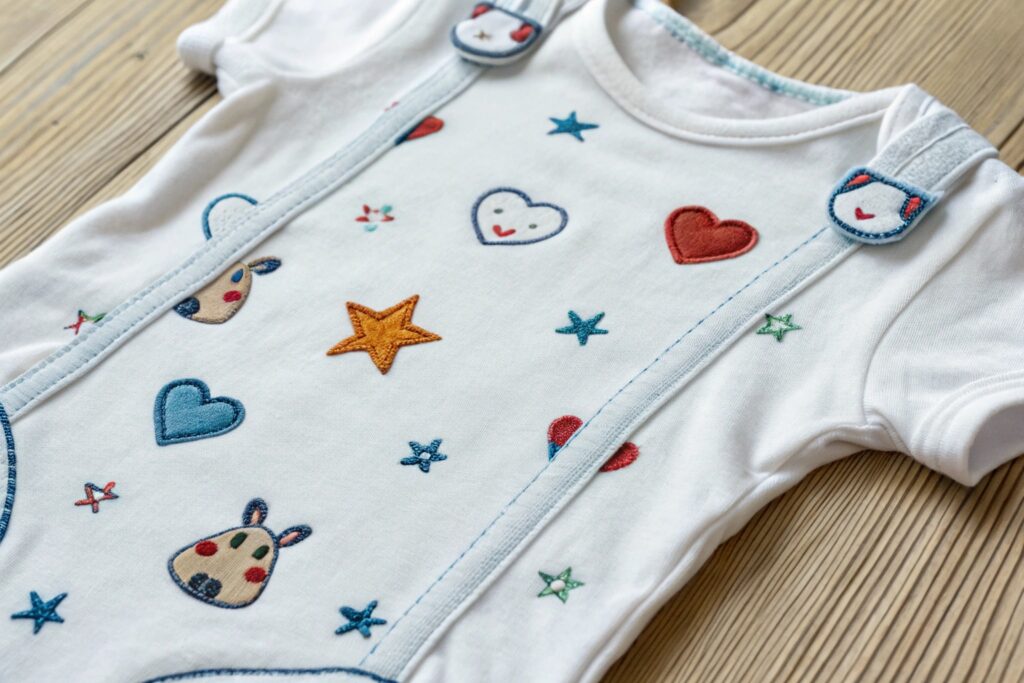
What personalization styles are trending right now?
| Trend Type | Description | Popular With |
|---|---|---|
| Mini embroidery | First name in script near chest | Modern minimalist parents |
| Birth detail prints | Name + date + weight | Keepsake buyers |
| Animal icon + name | Fox, bear, elephant + child’s name | Gender-neutral gifts |
| Zodiac/astrology | “Little Virgo” with constellation | Millennial parents |
| Holiday family sets | Matching tees with names | Instagram-loving families |
Fonts and colors matter too. Parents prefer:
- Soft tones (oat, sage, blush, sky blue)
- Handwritten or calligraphy-style fonts
- Simple line-art designs with names underneath
If your store lets buyers preview the design before purchase, conversion rates rise.
Where are brands applying the personalization?
- Chest/torso (center or side)
- Back of rompers
- Hat brims or bibs
- Matching name tags on gift boxes
Offering 2–3 placement options keeps it easy but flexible.
How to Offer Custom Babywear at Scale for Your Brand?
You don’t need to be a huge company to offer personalization. But it does take the right setup—both online and offline.
To offer personalized babywear at scale, streamline your ordering system, use fast customization tech, and create SOPs that reduce production error.
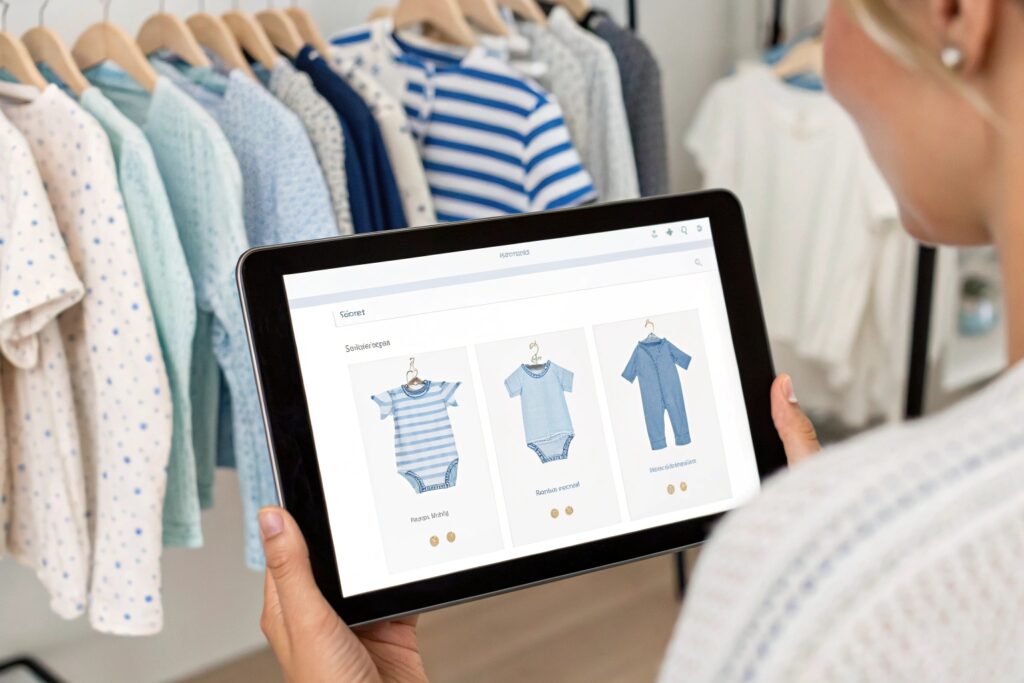
What backend systems do I need?
-
Customization-ready e-commerce:
- Shopify with product options plug-ins
- WooCommerce with “add name” field
- Live preview if possible (can boost conversion by 10–15%)
-
Clear production flow:
- Auto-download orders into production sheet
- Each order tagged with name + SKU + placement guide
- Centralized embroidery or print station with batch settings
-
- Heat transfer vinyl or DTF print for small runs
- On-demand embroidery machines (e.g., Brother PR series)
- Outsource printing locally or within factory
| Tool or System | Purpose |
|---|---|
| Online name preview | Boost confidence, reduce mistakes |
| Order summary PDF | For factory or in-house team use |
| Heat press or embroidery | On-demand personalization |
How can small brands keep it profitable?
- Charge +$5–$10 per name
- Bundle personalization into gift sets
- Offer limited-time custom options to manage flow
- Use pre-built templates to reduce layout time
It’s not about doing everything—it’s about making one or two high-emotion items available with your core line.
Conclusion
Personalized babywear turns clothing into memory. As parents seek meaning, identity, and connection, custom infant fashion is more than a trend—it’s the future. For brands that can deliver it with style and care, the rewards are lasting.

